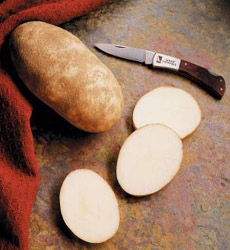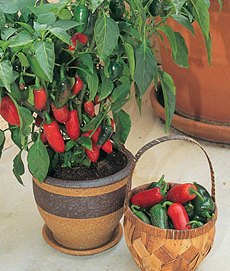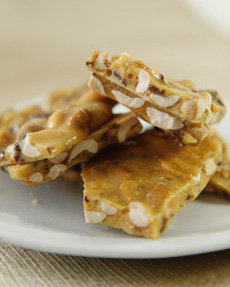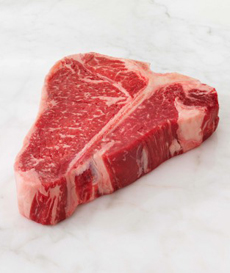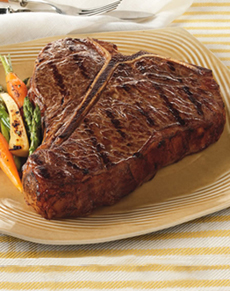
Charming lemon cucumbers. Photo courtesy
Burpee.com. |
|
LEMON CUCUMBERS
It’s a lemon…no, it’s a cucumber. We spotted these unusual cukes and the ones in the photo below on the Burpee Seeds website.
Imagine the surprise and delight when you serve a new and different twist on an everyday vegetable—or rather, fruit (see what makes something a fruit or a vegetable below).
The only question with these cute cukes is, how to serve them? Slicing them into discs or a julienne deprives diners of experiencing a round, yellow cucumber.
We like the idea of presenting the entire cucumber as an appetizer on a bed of mesclun or a bed of sliced and vinaigrette-marinated red onions. Serve a dressing or dip on the side: vinaigrette, yogurt-dill-garlic dip, salsa, or another favorite.
Alternatively, we’d bake them whole, like a potato. As with a potato, be sure to pierce the skin three times with a fork, to allow steam to escape.
|
|
Bake the cucumbers with the skins on, in a pan filled with 1/2 inch water at 350°F for 25 minutes. Use a cake tester or toothpick to test doneness and continue to cook as desired. You’ll have to experiment the first time you do it, based on oven variation and consistency preferences: You may want an al dente consistency or something softer to the tooth.
Then, season as desired: with salt and pepper, dill, garlic, paprika, tarragon, or other favorite herbs or spices. We recommend fresh dill and fat-free plain yogurt with salt and pepper—which is one of the ways we enjoy a baked potato.
Even raw, the round, lemon-yellow heirloom cucumbers are tender and sweet, excellent for salads as well as for pickling. They have a clean, crisp taste and are never bitter.
Burpee says that the vines yield heavily and for a long time. With 65 days to maturity, you’ve got time to plant them this year. It’s a fun project, and you’ll be able to share the wealth with foodie friends and family.
By the way, if these lemon cucumbers look like yellow squash to you, they’re botanical cousins. Both share the order Cucurbitales and the family Cucurbitaceae. They differ at the genus level: cucumbers belong to the genus Cucumis and squash to the genus Cucurbita.
If you love cucumbers, head to the Burpee website to check out 32 different varieties of cucumber!
|
|
CRYSTAL APPLE CUCUMBERS
Do you prefer the look of apples to lemons? Try this heirloom oldie, the Crystal Apple cucumber, which was bred in New Zealand in 1934.
The pale green fruits (yes, cucumbers are a fruit—see below) resemble Granny Smith apples, which themselves originated in New South Wales, Australia in 1868. And yes again, there was a Granny Smith: Maria Ann Smith, who propagated the cultivar from a chance seedling.
The flesh is smooth, tender, and creamy; both the Crystal Apple and Lemon Cucumbers make a bright, scrumptious addition to salads.
There are many varieties of heirloom cucumber. Look for them at farmers’ markets or get the seeds from Burpee and grow your own.
Get your seeds at Burpee.com.
While the charming appearance of unusual heirloom produce is a treat for foodies, it can also entice those who think they don’t like the vegetable to try something new.
|
|

Crystal Apple heirloom cukes from New Zealand look like Granny Smith apples. Photo courtesy Burpee.com.
|
THE DIFFERENCE BETWEEN FRUITS & VEGETABLES
Fact: Your favorite vegetables may actually be fruits! Tomatoes are fruits, avocados are fruits, chiles and bell peppers are fruits, cucumbers and squash are fruits.
Because they aren’t sweet, people tend to think of them (and classify them in recipes and produce departments) as vegetables. But by botanical definition, fruits carry their seeds on the inside.*
So if someone tells you he doesn’t like vegetables, respond: “These are fruits!”
With fruits, the seeds, or pits, are contained in the fruit’s ovary sac. Otherwise said, fruits carry their seeds inside.
In most angiosperms (flowering plants that produce fruit), part of the flower develops into the fruit.
True vegetables have no “pit” or seed sac. Root vegetables, celery, lettuces, herbs, and the crucifers† are all legitimate veggies.
Like fruits, vegetable plants produce flowers before they produce their edible portions. These flowers have seeds.
If vegetable plants are not harvested, they will eventually go to seed, which means the seeds develop as the plant stops flowering.
________________
*The only exception is the strawberry, and its seeds are not used for reproduction.
†The anti-carcinogen cruciferous family Brassicaceae (also called Cruciferae), includes arugula, bok choy, broccoli, Brussels sprouts, cabbage, cauliflower, collard greens, cress, daikon, horseradish, kale, kohlrabi, mizuna, mustard, radish, rutabaga and turnips, among other vegetables.
CHECK OUT WHAT’S HAPPENING ON OUR HOME PAGE, THENIBBLE.COM.
|
|

